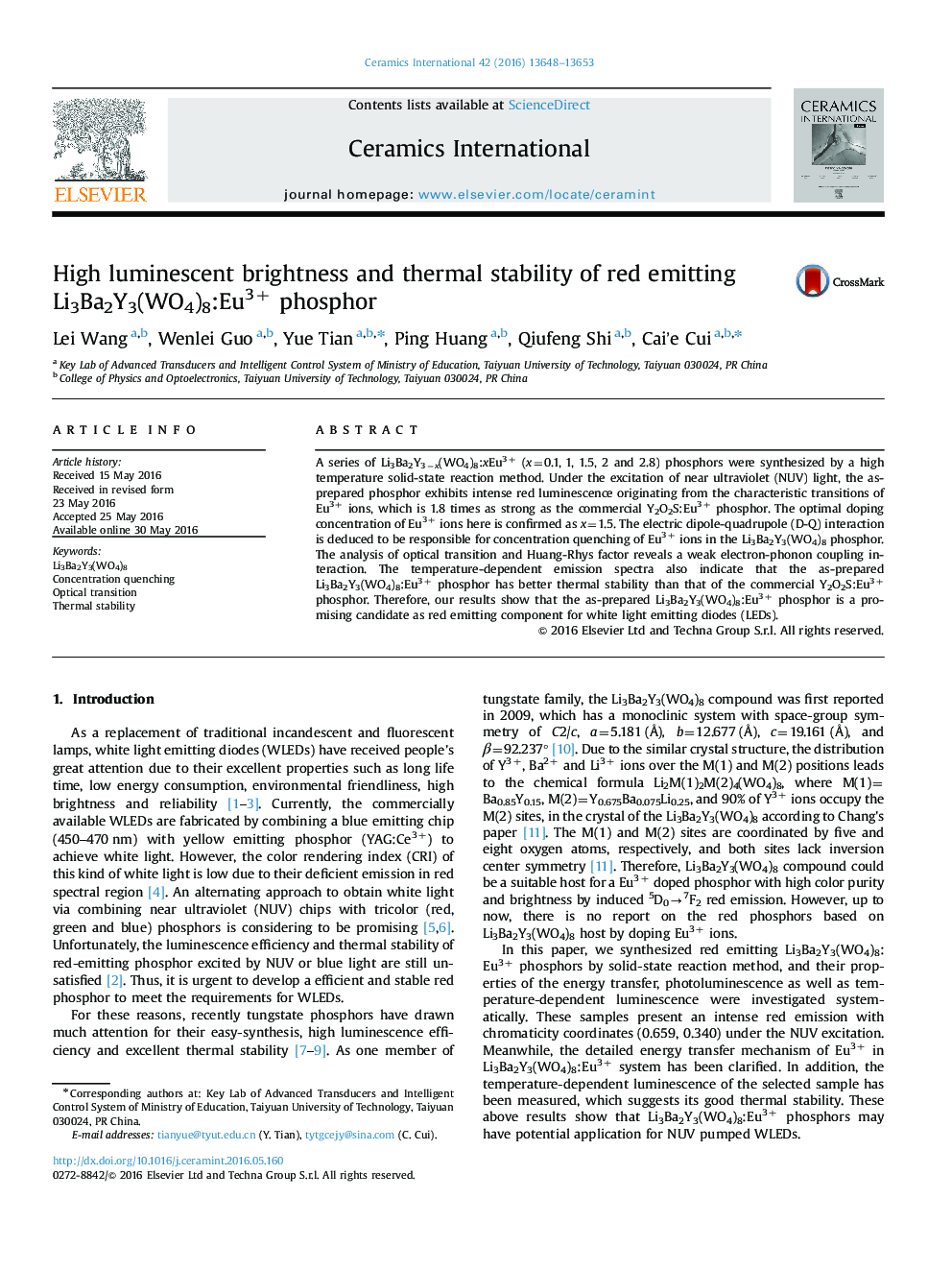| Article ID | Journal | Published Year | Pages | File Type |
|---|---|---|---|---|
| 1458524 | Ceramics International | 2016 | 6 Pages |
A series of Li3Ba2Y3−x(WO4)8:xEu3+ (x=0.1, 1, 1.5, 2 and 2.8) phosphors were synthesized by a high temperature solid-state reaction method. Under the excitation of near ultraviolet (NUV) light, the as-prepared phosphor exhibits intense red luminescence originating from the characteristic transitions of Eu3+ ions, which is 1.8 times as strong as the commercial Y2O2S:Eu3+ phosphor. The optimal doping concentration of Eu3+ ions here is confirmed as x=1.5. The electric dipole-quadrupole (D-Q) interaction is deduced to be responsible for concentration quenching of Eu3+ ions in the Li3Ba2Y3(WO4)8 phosphor. The analysis of optical transition and Huang-Rhys factor reveals a weak electron-phonon coupling interaction. The temperature-dependent emission spectra also indicate that the as-prepared Li3Ba2Y3(WO4)8:Eu3+ phosphor has better thermal stability than that of the commercial Y2O2S:Eu3+ phosphor. Therefore, our results show that the as-prepared Li3Ba2Y3(WO4)8:Eu3+ phosphor is a promising candidate as red emitting component for white light emitting diodes (LEDs).
